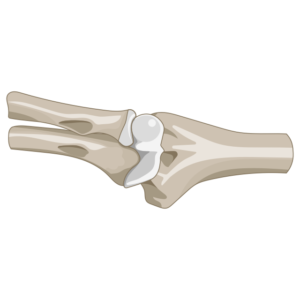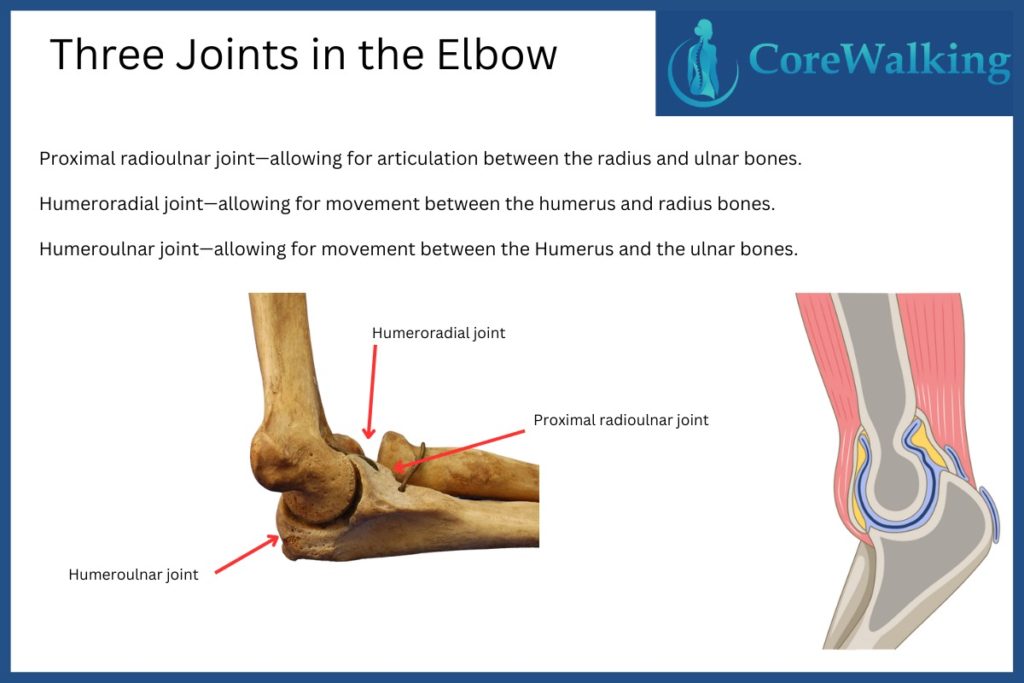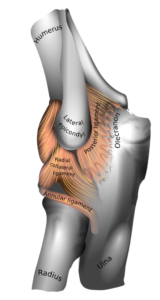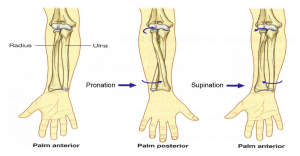The Three Joints in the Elbow
Three joints in the elbow allow the hand to be moved to and from the body. The upper extremity is made up of three bones—the humerus (or arm), the radius, and the ulna. The radius and ulna are the bones of the forearm.

The three joints in the elbow are:
- Proximal radioulnar joint—allowing for articulation between the radius and ulnar bones.
- Humeroradial joint—allowing for movement between the humerus and radius bones.
- Humeroulnar joint—allowing for movement between the Humerus and the ulnar bones.

The proximal radioulnar joint is a pivot joint that allows for the bones of the forearm to rotate around each other. In the lower leg, the two bones of the shin—the tibia and fibula—can’t cross each other but in the forearm, the proximal radioulnar joint allows for this type of crossing over of the bones.
Proximal means at the top—there is also a distal radioulnar joint at the wrist.
Let’s say you are in a sphinx pose with your palms flat on the floor. In this position, the radius and ulna are crossed but turn the palms up to face the ceiling and the radius and ulna are parallel to each other.
The humeroradial joint is a ball and socket joint that should allow for a great deal of range of motion but the shape of the humerus bone above it effectively turns it into a hinge joint that can only flex and extend.
The third joint, the humeroulnar joint is a pure hinge as the ulna doesn’t rotate.
 Movement of the elbow and its three joints comes mostly from the biceps and triceps muscles. Tthe biceps flexes the elbow and the triceps extends the elbow.
Movement of the elbow and its three joints comes mostly from the biceps and triceps muscles. Tthe biceps flexes the elbow and the triceps extends the elbow.
But there are a few other muscles involved that all relate to the biceps and triceps in a way.
The anconeus which can be seen as a continuation of the triceps helps with extension.
The brachialis, which helps flex the elbow inward toward the body, and the brachioradialis, which flexes the forearm at the elbow, both underlie the biceps and assist it in its primary action.
I’ve been meaning to spend some time with the biceps muscle, specifically it’s a tendon that connects to the coracoid process that sometimes goes south under the guise of biceps tendonitis.
This often is involved with a condition known as adhesive capsulitis or frozen shoulder so stay tuned for some posts about that in the near future.

